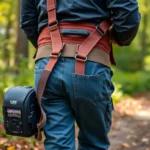
Introduction
Dog training is an essential part of responsible pet ownership. It not only fosters a strong bond between you and your canine companion but also ensures their safety and well-being. Among the various tools available for dog training, dog whistles stand out as highly effective. These specialized whistles are designed to communicate commands to dogs in a clear and consistent manner, making them invaluable for trainers and dog owners alike.
In this article, we will explore the best dog whistles on the market, discussing their features, benefits, and how they can enhance your training regimen. Whether you’re a seasoned trainer or a new dog owner, understanding how to choose and use a dog whistle can significantly improve your training outcomes.
Understanding Dog Whistles
What is a Dog Whistle?
A dog whistle is a unique training tool that emits sound at a frequency that is generally inaudible to humans but easily perceived by dogs. These whistles typically operate within a frequency range of 2000 Hz to 40000 Hz, allowing them to communicate with dogs over long distances. The mechanics behind a dog whistle involve a simple design that enables the user to produce different pitches and tones, which dogs can learn to associate with specific commands or behaviors.
Benefits of Using a Dog Whistle
Using a dog whistle offers several advantages:
- Clarity of Communication: Unlike verbal commands, which can vary in tone and volume, a whistle provides a consistent sound that dogs can easily recognize.
- Consistency in Training Cues: Whistling ensures that your commands remain uniform, making it easier for dogs to learn and respond appropriately.
- Long-Distance Command Capabilities: A whistle can be heard from much farther away than a human voice, making it an excellent tool for outdoor training sessions.
- Reduction of Vocal Strain: For trainers who frequently call their dogs, a whistle alleviates the strain on their vocal cords, allowing for prolonged training without discomfort.
Factors to Consider When Choosing a Dog Whistle
Frequency Range
The frequency of a dog whistle plays a crucial role in its effectiveness. Different dogs may respond better to certain frequencies, so understanding your dog’s sensitivity can help you choose the right whistle. Higher frequencies (above 2000 Hz) are typically more effective, as they are sharper and can cut through ambient noise.
Material and Build Quality
Durability is essential when selecting a dog whistle. Look for whistles made from high-quality materials that can withstand wear and tear from regular use. Additionally, consider the comfort of the whistle in your hand, especially if you plan to use it frequently.
Design Features
Dog whistles come in various designs, each with its pros and cons. Options include:
- Plastic vs. Metal: Plastic whistles are lightweight and often more affordable, while metal whistles can produce a clearer sound and are generally more durable.
- Single vs. Multi-Tone: Multi-tone whistles can produce different sounds for various commands, offering versatility in training.
Personal Preferences
Each dog is unique, and their responsiveness to whistles can vary. It’s vital to consider your dog’s characteristics and preferences when selecting a whistle. Additionally, choose a design that feels comfortable for you to use, as you’ll be the one handling it during training.
Top Dog Whistles on the Market
Review Criteria
To identify the best dog whistles, we evaluated several factors, including sound quality, durability, user reviews, and overall effectiveness in dog training. Below are detailed reviews of some of the top options.
Acme 211.5 Dog Whistle
This whistle is one of the most popular choices among dog trainers.
- Features: The Acme 211.5 produces a frequency of approximately 5900 Hz, making it effective for a variety of dog breeds.
- Pros: Durable plastic construction, consistent sound quality, and a wide range that can reach long distances.
- Cons: Some users may find the sound too high-pitched for certain dogs.
- Ideal Use Cases: Excellent for recall training and outdoor activities.
PetSafe Silent Whistle
The PetSafe Silent Whistle is designed for those who prefer a discreet training tool.
- Features: This whistle is adjustable, allowing you to modify the frequency to suit your dog’s hearing range.
- Pros: Lightweight, adjustable frequency, and silent to human ears.
- Cons: Some dogs may take longer to respond due to the silent nature of the whistle.
- Ideal Use Cases: Perfect for training sessions in quiet environments or for dogs that are easily distracted.
SportDOG Brand FieldTrainer
The SportDOG FieldTrainer is a versatile option for serious trainers.
- Features: This whistle features a rugged design and can be used in various outdoor settings.
- Pros: High durability, adjustable frequency, and a comfortable grip for extended use.
- Cons: Slightly pricier than standard whistles.
- Ideal Use Cases: Great for hunting dogs or training in challenging environments.
Dog Whistle by Good Life
This whistle is known for its quality and affordability.
- Features: The Good Life whistle emits a loud, clear sound that is easy for dogs to hear.
- Pros: Affordable, durable, and easy to use.
- Cons: Limited frequency range compared to premium options.
- Ideal Use Cases: Suitable for basic obedience training and beginners.
ZippyPaws Squeaky Dog Whistle
For a fun twist, the ZippyPaws Squeaky Dog Whistle adds an entertaining element to training.
- Features: This whistle not only emits a high-pitched sound but also squeaks, capturing your dog’s attention.
- Pros: Unique design, engaging sound, and lightweight.
- Cons: Squeak may be distracting for some dogs.
- Ideal Use Cases: Ideal for playtime training sessions or to keep dogs engaged during practice.
How to Train Your Dog with a Whistle
Basic Training Techniques
Introducing a dog whistle to your training routine can be straightforward. Start by associating the whistle sound with positive reinforcement. Here’s a step-by-step guide:
- Choose a Command: Select a command that you want your dog to learn, such as “come.”
- Use the Whistle: Blow the whistle once and immediately follow it with a treat or praise when your dog responds.
- Repeat: Consistently repeat this process until your dog associates the whistle with the command.
- Gradually Increase Distance: Once your dog understands the command, practice at greater distances.
Common Commands and How to Use the Whistle
Using a whistle can enhance the effectiveness of various commands:
- Recall: A single long blow followed by a treat when the dog returns.
- Sit: A short, sharp blow can signal your dog to sit, followed by immediate praise.
- Stay: Use a series of short blows to indicate your dog should remain in place.
Troubleshooting Training Issues
Training with a dog whistle may come with challenges. Here are common issues and solutions:
- Lack of Response: If your dog doesn’t respond, ensure you are in a distraction-free environment. Use higher-value treats or toys to capture their attention.
- Overexcitement: If your dog becomes overly excited, practice short training sessions and gradually increase intensity.
- Consistency: Always use the same whistle sound for specific commands to prevent confusion.
Frequently Asked Questions (FAQs)
Can all dogs respond to whistles?
Most dogs can learn to respond to dog whistles, although some breeds may be more sensitive to sound than others. It’s essential to find the right frequency that resonates with your dog.
How long does it take for a dog to learn whistle commands?
The time it takes for a dog to learn whistle commands varies depending on the individual dog, their previous training experience, and the consistency of practice. Typically, with regular training, dogs can learn basic commands within a few weeks.
Are silent whistles effective for all dog breeds?
Silent whistles can be effective, but their success depends on the dog’s hearing abilities. Some dogs may struggle to respond to silent whistles, while others find them highly effective.
What if my dog is deaf or hard of hearing?
For deaf or hard-of-hearing dogs, visual cues or vibration collars can be alternative training methods. Adjust your training techniques to rely more on visual commands rather than auditory signals.
Conclusion
Incorporating dog whistles into your training routine can significantly improve communication with your dog. From the Acme 211.5 to the ZippyPaws Squeaky Dog Whistle, there are options available to suit every trainer’s needs and preferences. By choosing the right whistle and employing effective training techniques, you can foster a better understanding and stronger bond with your canine companion. Embrace the power of a dog whistle for more effective training and enjoy the journey of teaching your dog new commands.









